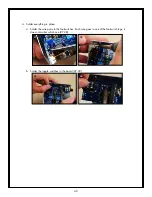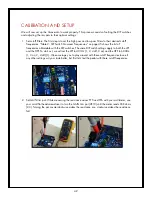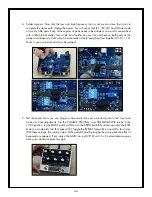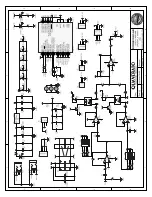
45
If you would like to change your Quaverato’s tone you can
adjust the HIGH and LOW trim pots. The values to which
we originally set these trim pots (see paragraph 3 above)
give, in our opinon, a good balance of highs and lows.
This being strictly a matter of taste, you should feel free to
play with these pots. You will notice that the highs and lows
need to be well balanced to hear the most dramatic effect
in the harmonic tremolo mode (PHASE switch set to OUT).
If you would like the tone to be a little brighter then turn up the
HIGH trim pot (clockwise) and turn down the LOW trim pot
(counterclockwise). If you would like the tone to be a bit darker
do the opposite: turn down the HIGH trim pot (counterclockwise)
and turn up the LOW trim pot (clockwise). Turn the trim pots
just one rotation at a time so you can keep track of how much
you’ve adjusted them. You can always adjust the trim pots back
to their original values if you don’t like the results. If you want to
measure across the test points to re-calibrate the trim pots, you
will need to use some solder wick to remove the solder jumpers.
Also, feel free to play with the DIP switch settings to explore the
sonic possibilities of adjusting the crossover frequencies. Table
2 shows the DIP switch settings for various cutoff frequencies.
You will get the most dramatic whooshey / phasey harmonic
tremolo sounds when the HPF is set to a very high setting and the
LPF is set to a very low setting. The further apart they are set, the
more dramatic the effect will be. You will also notice that a lot
of the high- and mid-range frequencies are more muted in these
extreme settings, causing a lot of the sonic clarity to be lost.
With the HPF set to a very low setting and the LPF set to a very
high setting you will notice that much of the dramatic phasing
harmonic tremolo sounds are much more subdued, but the high-
mid clarity is back. We set these filters to 401Hz (for the LPF) and
600Hz (for the HPF) because it gives a good mix of the phasey
sound but still lets most of the clarity of the high-mids through.
NOTE
: For circuit stability make sure at least one of the switches
on each DIP switch is in the ON position at all times.
Table 2: DIP Switch
Crossover Frequencies





































